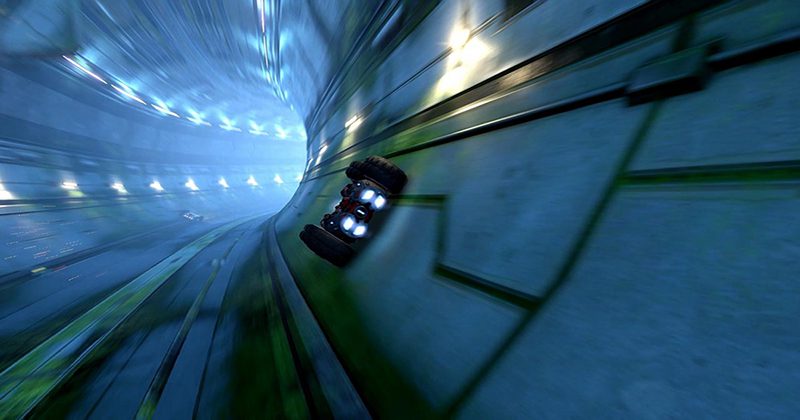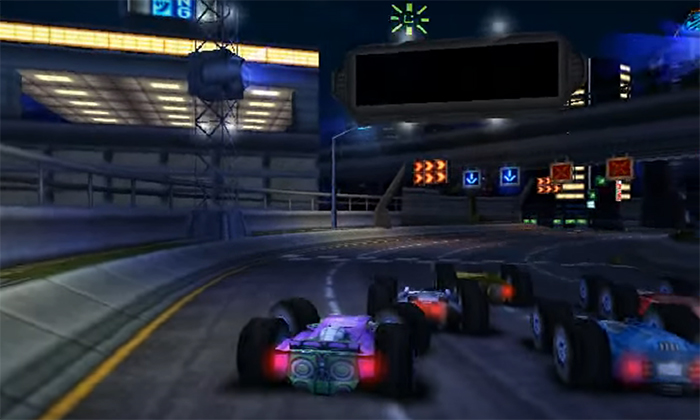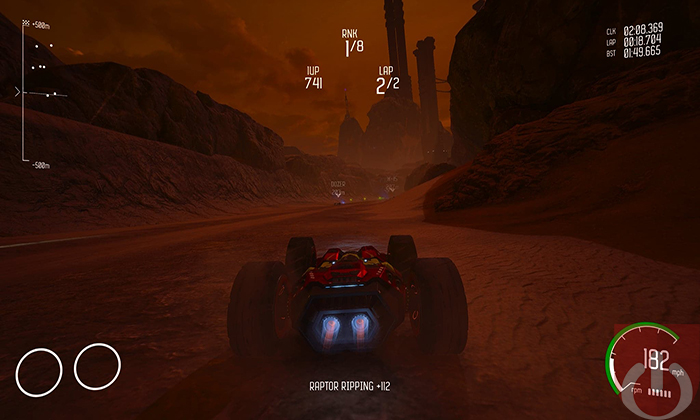
Rollcage’s Legacy: A Brief Look at GRIP’s Predecessor
It might be hard to fathom now, but back in 1995, a big part of Sony’s initial success with their newly-released PlayStation system was Wipeout, a sci-fi combat racer. Nintendo had helped pave the way with F-Zero and even Mario Kart, which Wipeout used as inspiration to create something that felt wholly new. Wipeout ushered in the next generation of gaming – in full 3D – with its stunning graphics, insane speed, and fine-tuned mechanics. It was and remains one of the greatest video games ever made.
But it wasn’t the only such game worth waxing nostalgic over. Sony had wisely bought Psygnosis to help create compelling content for their first steps into gaming. Formed in the 80s, Psygnosis was instantly recognizable to any gamer with a Commodore Amiga, C64, and even PC. They made some of the most cutting-edge and gorgeous games of the time. For Sony, they made Wipeout and would go on to make some of the most graphically impressive games on the PS One – G-Police, Colony Wars, Lemmings, Blast Radius, Destruction Derby, and many others.
At various points, Psygnosis worked with other developers to publish titles that fit their motiff and such was the case with the 1999 release of Rollcage, Sony’s other sci-fi combat racer. Developed by the now-defunct Attention to Detail (ATD), it’s fair to say this (and its sequel) was ATD’s magnus opus. While it shared the same basic genre as Wipeout, the two games were very different in execution. Here, you were racing in massive four-wheeled tanks that could literally drive up walls and, provided you maintained speed, race across the ceilings of tracks.
Rollcage’s amazing-looking rovers didn’t have a set top or bottom; as long as they landed on all four wheels, they just kept going. In a world full of second-rate Wipeout clones, Rollcage was a much-needed exhilarating breath of fresh air for both PlayStation and PC gamers. Both it and its sequel, Rollcage Stage II (released in 2000 and also called, for no apparent reason, Death Track Racing in the US on PC), pushed the PS One’s already aging hardware to the limits with incredible lighting and visual effects. They felt like a grittier takes on the genre, with destructible portions of the track and an array of hefty weapons.
Rollcage was easily accessible and joyously destructive, yet still required finesse and skill. Tracks were designed to both take advantage of the game’s unique wall and ceiling-hugging gameplay and the limitations of the PlayStation hardware. The PS One particularly had draw distance problems, so tracks that curved or had massive features that obstructed the background created the illusion of vast treks across alien worlds. Rollcage still managed to have a constant mix of enclosed walled areas and more open road though.
None of that, of course, is all that different from what Wipeout already offered. What make Rollcage stand out was the sheer lunatic fun of rocketing up a wall, speeding across a ceiling, then suddenly running out of “road”. Your giant four-wheeled beast hangs in the air, pushing forward, until it lands with a crushing impact on the ground again and, provided you didn’t completely screw the landing, just keeps plowing forward.
In any other game, driving along a ceiling would make you “upside down” and you’d have landed on the cockpit. Here, that was irrelevant and it’s an insanely fun and unique mechanic. In multiplayer, Rollcage blooms even more, because it’s a game that thrives on extremely aggressive competition. Once over the hump of getting the hang of the handling and physics, tight competition is rewarded with gameplay tactics like literally landing on opponents, smashing them off their gravity-defying perches, and just generally being a jerk in more dimensions than were ever possible in any other racer.
I spent more hours than I can count playing both Rollcage games on the PlayStation and PC. At the time, it was one of the most popular games in my small LAN-based PC multiplayer group; on the PlayStation, we were limited to two-player split-screen, but the PC version let us spread out at LAN parties for even more players. You could even play the game online, though that required more effort back then. Like Wipeout, which helped usher in the era of gaming’s obsession with spending money on intense, topnotch techno soundtracks, it even sported a soundtrack largely by Fatboy Slim – though the importance of Psygnosis’ soundtracks could lead to its own article. The point is, Rollcage had a lot going for it.
While both games earned generally high scores from reviewers and decent sales, it wasn’t enough. Stage II was the end of the road and just like that, Rollcage was gone. Frustratingly, Rollcage 3 was actually in development. As so often happens in gaming, priorities changed and the game ended up shifting direction entirely to become a kid-friendly racer called Firebugs. Oddly, Firebugs was only released in Europe.
Wipeout kept on going into the PS2 era and beyond, but Rollcage faded into obscurity. So it’s remained until a few years ago when a Kickstarter popped up for a game called GRIP, purported to be the ‘spiritual successor’ to Rollcage. This new game would be brought to life by a team of dedicated fans of the series, including key members of the original Rollcage development team. The Kickstarter failed, but the team (under the name Caged Element) realigned and opted to try Steam’s brand new Early Access program.
That move proved to be a success and GRIP is finally arriving to give modern gamers the chance to discover what fans of Rollcage have known for years. Watching the trailers or playing the Early Access builds, GRIP is instantly recognizable as a modern Rollcage. The vehicle design, the look of the tracks, and, of course, the gravity-twisting gameplay are all completely spot-on to the original formula. Wipeout may hold the crown as the gold standard in sci-fi racing, but Rollcage flipped the formula on its head and created something equally as special.
Sadly, Sony never released digital versions of the original PlayStation Rollcage games, although PS3 owners can still play if they have physical copies. Even with GRIP launching, these old treasures are still worth playing. This is especially the case with the PC version, which was unofficially enhanced to run on modern PCs to fantastic effect. It’s also completely free.
Or you could just stick with the modern consoles, play GRIP in 4K HDR and enjoy a racer that, despite being a remake of a nearly 20-year-old game, still feels like nothing else out there.
Jason D’Aprile is a freelance writer who’s written for Playboy, Paste, Gamespot, and other established media outlets.


